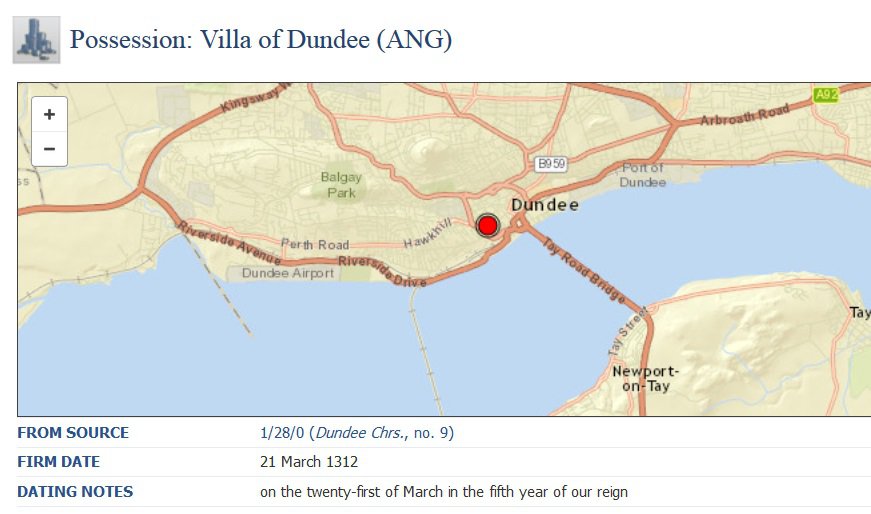Basic Search results maps
PoMS users will have noticed that pages throughout the database now display maps in a box above the factoids. This page will walk users through the maps that come up on the four types of pages that will produce results using the Basic Search box: People, Sources, Places, and Factoids.
Person pages
Person pages display results based on witnessing activity. If that person has witnessed documents which have a place-date giving the place where those documents were produced, these places are displayed in green. If that person has witnessed documents which have transactions regarding possessions, these places are displayed in red. In other words, the red dots signify the places that the charters are about. The person's activity as a grantor or beneficiary is not displayed in the map results. The map below gives the example of Philip de Valognes, king's chamberlain.
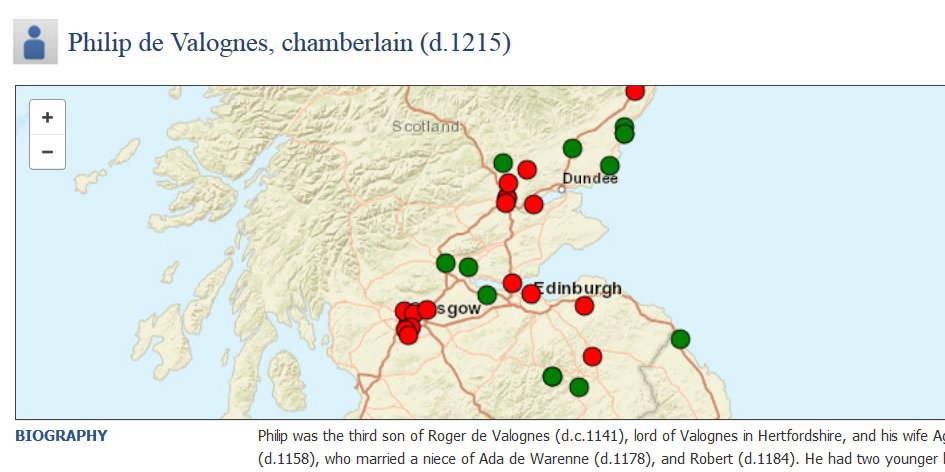
Source pages
The document pages will also include a map with the location at which the document was produced (the place-date), if it has one. The below document, Malcolm IV's famous grand confirmation to Kelso Abbey, was dated at Roxburgh. Please note that most non-royal charters do not have a place-date and will not display a map at the top of the page.
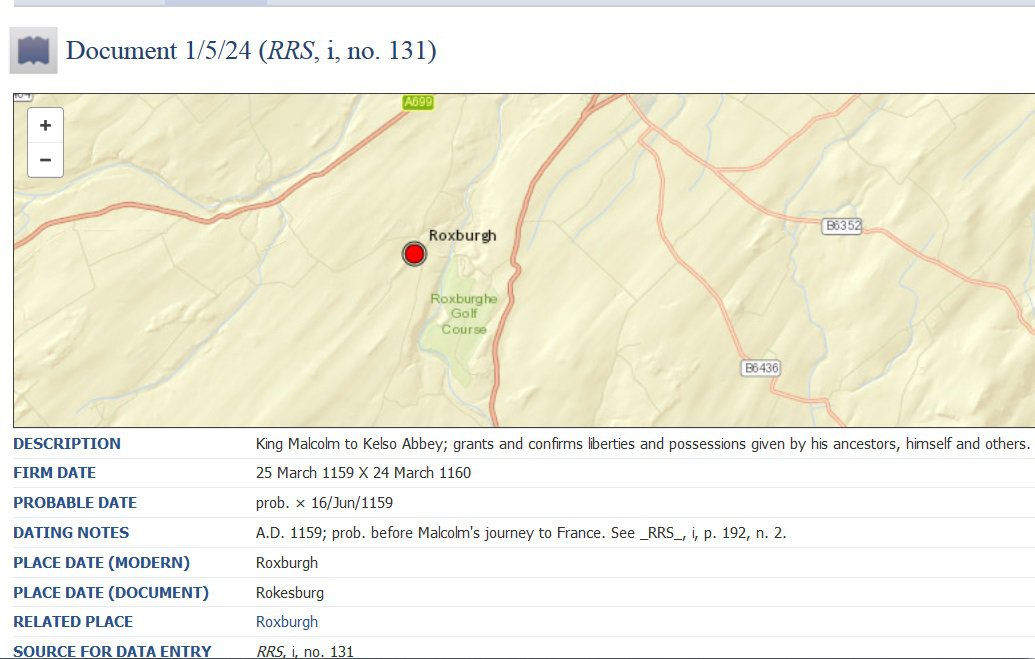
Place pages
Place pages will, unsurprisingly, display that place on a map at the top of the page. The following example is for Inverness.
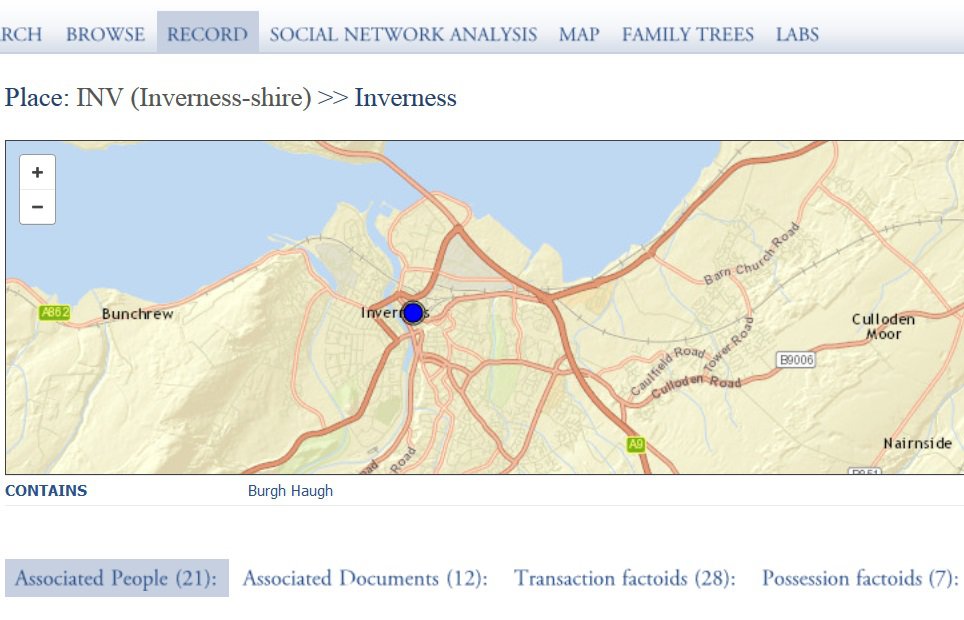
Factoid search
You can type just about anything into the basic search box and select the factoid option and get something back. There are four types of 'factoids' in the database: transactions, possessions, titles, and relationships. Only the first two of these options may show a map. Here are examples of a possession and a transaction:
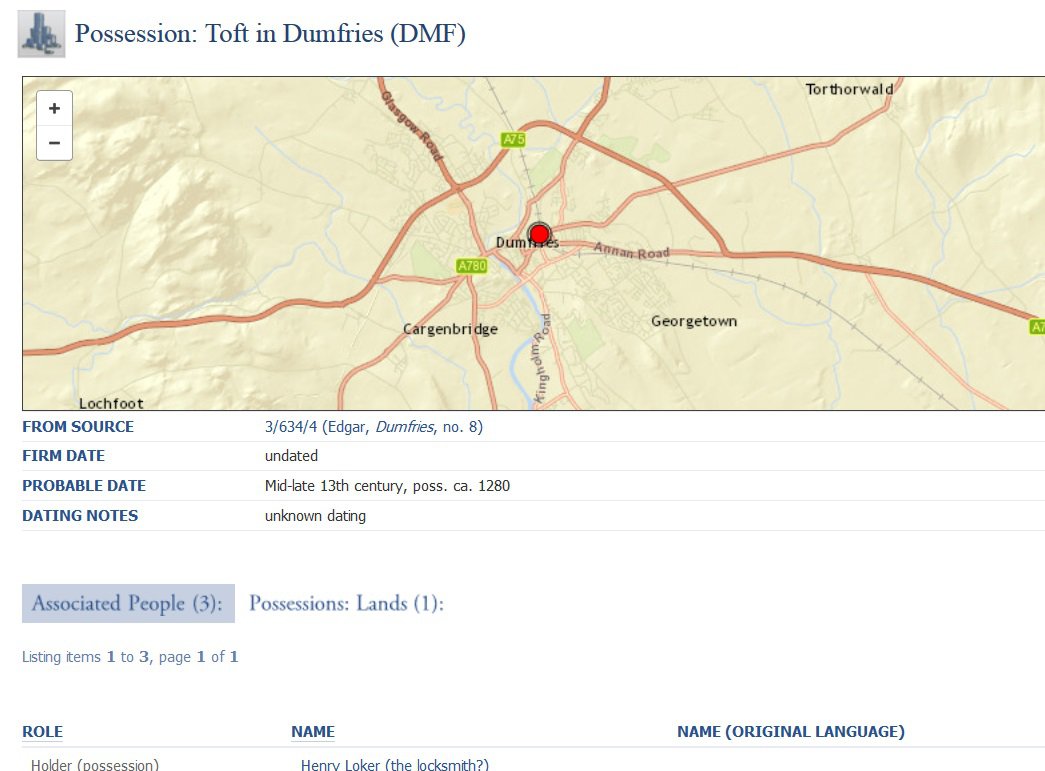
You can see from the following that displaying the place in a transaction page can be very helpful in locating sites that are off the beaten track.
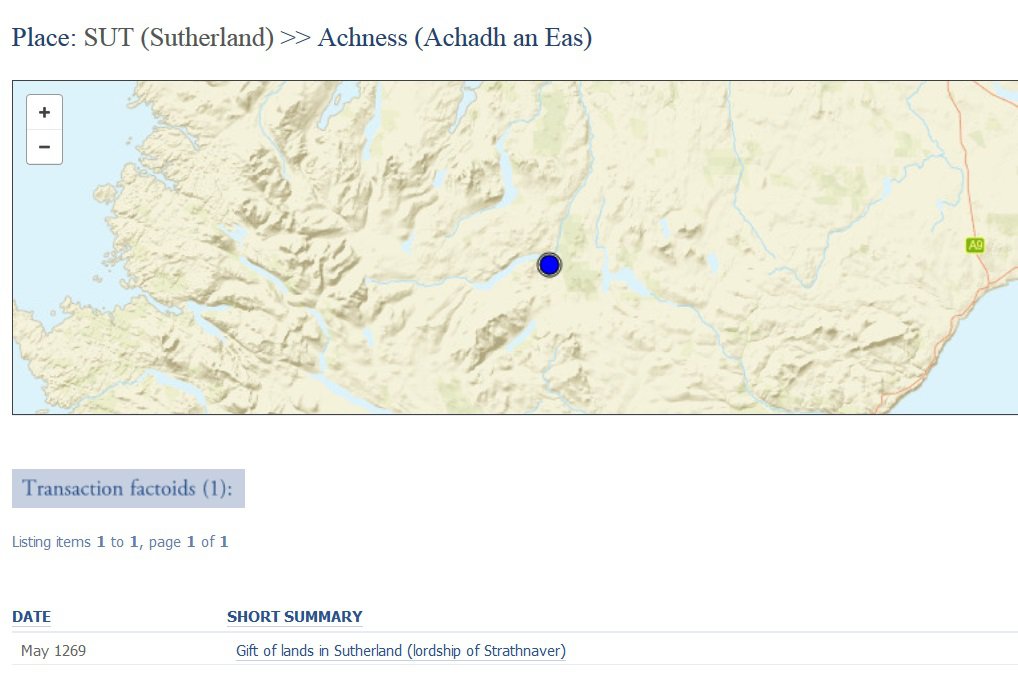
Transaction factoid pages often involve multiple gifts. The following two maps show the possessions given by King William to his brother Earl David, in central Scotland and in Aberdeenshire.
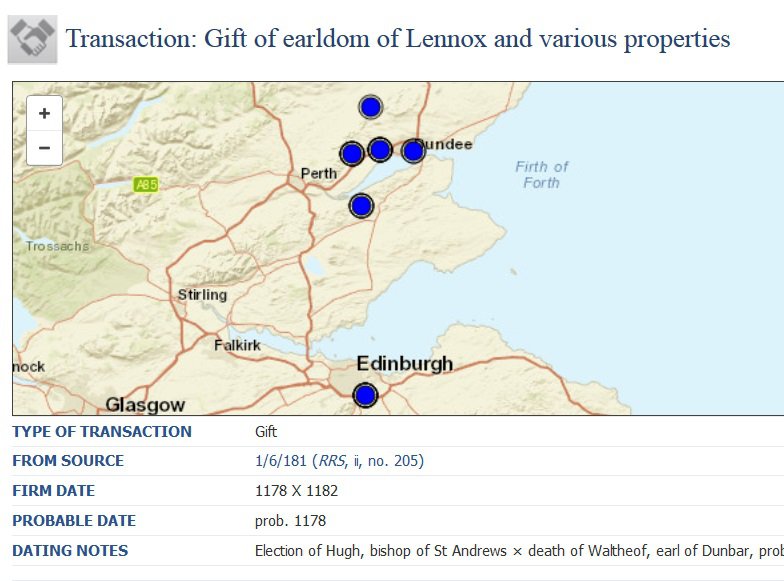
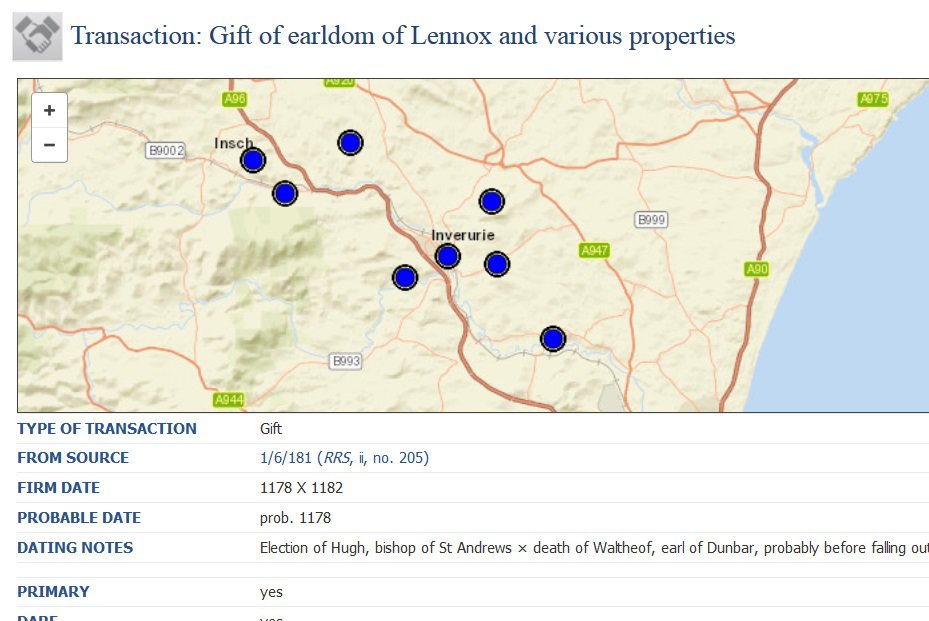
Of course, the location of a simple possession factoid page will also display:
